
Patent pains
Over the last few years, there has been a growing number of claims and counterclaims for plant patents.Around 80 per cent of these claims are from industrial corporations and the rest from

Over the last few years, there has been a growing number of claims and counterclaims for plant patents.Around 80 per cent of these claims are from industrial corporations and the rest from
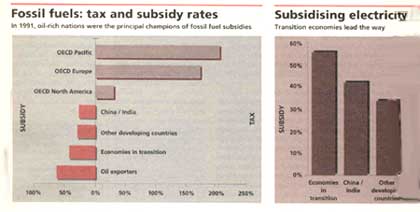
Environmentally sustainable development is the high point of talk in almost all international fora these But a key policy question is the extent to which the existing tax and subsidy regimes

The scenario in the fishing industry is alarming. The state of straddling fish stocks is a global disasaster and overfishing is a major problem. The structure of the fishing industry has

Despite increasing growth in food production, food security remains a problem. If the available food energy were evenly distributed within each country, 33 countries would not have been able to
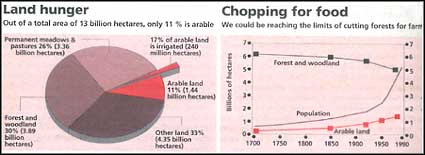
While malnutrition stays with us in a big way, the quantity of arable land per capita is diminishing rapidly. Africa's population has increased from just under 300 million in 1970, to over 500

... and also eyes, vegetation, forests, crops, buildings, statues, monuments .... The latest reports of the World Health Organisation show that our cities are becoming like throwbacks to an

Since the early '60s, medical research and public information campaigns have exposed the dangers -- passive and active -- of tobacco smoke. The resulting public paranoia led to the number of smokers
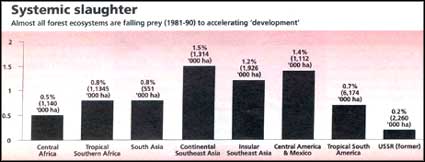
How green was our earth! And how fast is 'development' robbing us of the vital forest cover .. The depletion is causing major ecological damage, often completely destroying habitats, uproating
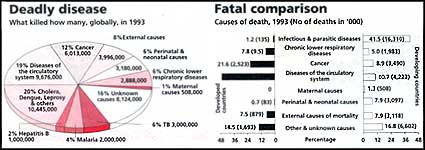
IT IS a profoundly unhealthy world we occupy today. THE World Health Report, 1995 brought out by the World Health Organization, Geneva, reveals that about 51 million people died in 1993 worldwide:

The world is heading towards a water crisis. The doubling of the world's population between 1940 and 1990 has led to a doubling in per capita use of water, from 400 to 800 cubic metres per person

The 1993-94 Annual Review and Assessment of the World Tropical Timber Situation reports that declining global production and imports have increased the chasm between exports and imports to over
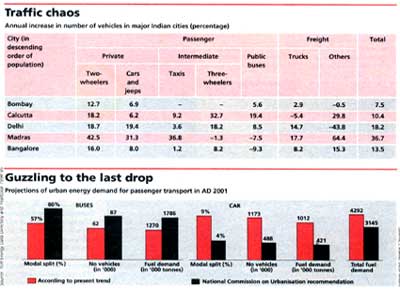
The energy, especially oil, consumed to transport goods and people is galloping. Almost uncontrollable urbanisation in India, especially in and around the larger cities, highlights the acute problems

IN RURAL areas, the use of collected biomass continues to burgeon because the availability of alternate sources of energy has increased more tardily than expected. The poorest of the rural poor are

Since 1985, countries -- particularly in Latin America -- have negotiated several arrangements to reduce their crippling debt burden. They promptly ended up losing the right to decide what to do with
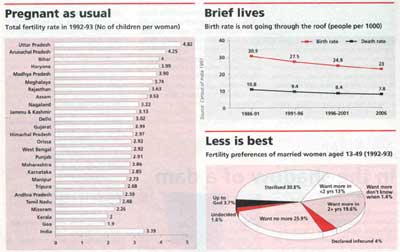
THE Indian fertility graph mirrors the falling rate. Urban women who have 1 child less, on an average, are spearheading the fertility downslide. Women in their 40s have an average 5 children each,

By AD 2025, 4.3 billion people will be living in Asia, nearly 2.5 billion in the urban areas. Claustrophobic mayhem. There will be more people in Southeast Asia's cities scrabbling for vegetables

In India, out of a land area of 330 million ha, only cultivated. The remaining areas of forests, woodlands, grasslands, marshes, rivers, lakes and shorelines are common property resources (CPRs).

First classified as a disease in 1981, aids still threatens the mankind, as World AIDS Day was being observed on December 1, 1994. Despite colossal funds being diverted to aids research, till now

Who is to blame for the world's environmental woes-the poor nations or the rich countries? The developed countries show high resource consumption patterns that make them the bigger polluters. But

Coral reefs, one of the world's most biologically diverse ecosystems, are in a steady state of decline around the world. A study by the World Conservation Union and the United Nations